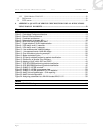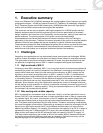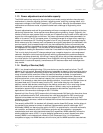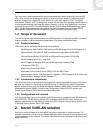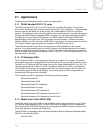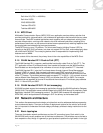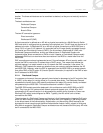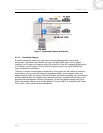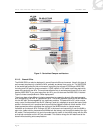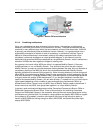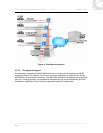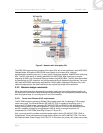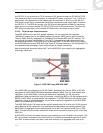
Voice over Wireless LAN Solution Guide v1.0 December 2005
______________________________________________________________________________________________________
Page 10
Dell Axim X5 (CPU >= 400 MHz)
Dell Axim X3/C3i
iPAQ h5550/h5555
Toshiba e750/e755
Toshiba e800/e805
2.1.4 MCS Client
Multimedia Communication Server (MCS) 5100 is an application services delivery solution that
provides productivity, personalization, and collaborative applications that transform the way users
communicate. These SIP-enabled applications work together with an enterprise’s existing voice
and data infrastructure, evolving voice networks into true multimedia solutions, adapting to the
preferences of each user, so that communications become personalized, reducing repetitive time-
consuming tasks and streamlining business processes.
The MCS Client runs on a PC platform. The client uses Session Initiation Protocol (SIP) for
signaling to the MCS 5100 call server, but does not support SVP for QoS, and consequently does
not utilize the WTM 2245. The underlying device driver is responsible for implementing QoS
features such as WMM.
In the context of this document, the primary focus is the voice capabilities of the MCS Client.
2.1.5 WLAN Handset 2211 Push-to-Talk (PTT)
The WLAN Handset 2211 supports a walkie-talkie functionality called Push-to-Talk (PTT). The
PTT application utilizes IP multicast directly from handset to handset over the WLAN medium.
Each handset can be configured to be a member of one out of eight possible PTT “channels.”
The WLAN Handset 2211 joins the IP multicast stream through Internet Group Management
Protocol (IGMP) v1 reports. Each handset continues to send IGMP reports as long as PTT is
enabled, so the IP multicast state is maintained in the network even when there is no active use
of the PTT feature. The multicast address used to support PTT is 224.0.1.116, and each channel
uses a different User Datagram Protocol (UDP) port number from 5001 to 5008. For example,
handsets that are members of channel 2 would send the multicast to IP multicast group address
224.0.1.116 and UDP port 5002.
2.1.6 WLAN Handset 2210/11/12 text messaging
All WLAN handsets support text messaging applications through the WLAN Application Gateway
(WAG) 2246. The application server communicates to the WAG 2246 through a proprietary Open
Application Interface (OAI) messaging protocol. The WAG 2246 forwards the messages to the
WTM 2245, which encapsulates the message in SVP for delivery to the handset itself.
2.2 Network architecture
This section discusses some basic design principles that must be addresses before progressing
to more advanced topics. There are a number of deployment options for the solution as a whole,
but it is important to understand the basic design philosophy and basic design restrictions for the
solution.
2.2.1 Basic topologies
There are three basic network architectures and two AP connection types. Each switch in the
WLAN 2300 family usually enables one of the three architectures. The switches are not limited to
their respective roles, though it is generally a good practice to position the right switch in the right






